
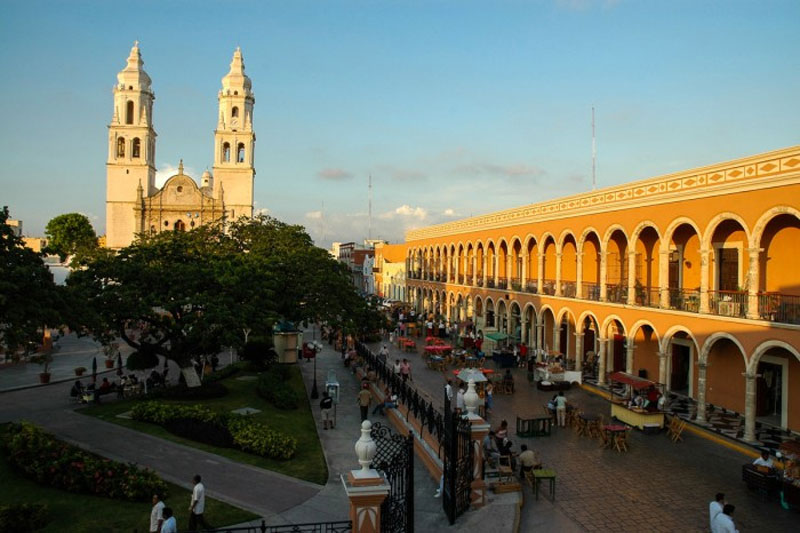


The town of Campeche is a well preserved walled colonial city - walls originally to protect the citizens from the "English Pirate Drake"
San Francisco de Campeche, founded in 1540, on the shore of the Gulf of Mexico. In December, 1999, it was recognized by UNESCO as the “Historic Fortified City of Campeche”: because of its buildings representing the military architecture of the seventeenth and eighteenth century; its traditional homes with Andalusian and Caribbean influence, and its model of urbanization of a Baroque colonial city. This is the only walled city in Mexico; Campeche has 1,640 feet of walls, two doors, two forts and eight bastions, defensive constructions in the shape of a pentagon.
It was the most important seaport at the time and played a major role for the conquest and evangelization of the Yucatan Peninsula, Guatemala and Chiapas. Its commercial and military importance made it the second biggest town in the Gulf of Mexico, after Mérida. This was due to its importance as a port in the sea route: Spain, Havana, Campeche, and Veracruz; as a point of embarkation of the natural riches of the peninsula ,in the the second half of the 16th century. Campeche, like other Caribbean towns, was systematically attacked by pirates and corsairs in the pay of enemies of Spain; this is why a large-scale defensive system was installed. This military defensive system for mid-17th century was inadequate and poorly strategic so a new fortification - hexagonal wall, integrating eight bastions, four doors and walls- was authorized, with construction started in 1686 and concluding in 1704. Subsequently, to complete the system of fortifications, the redoubt of San Jose on the east Hill of the village and the redoubt of San Miguel on the west Hill, as well as the batteries of San Lucas, San Matias and San Luis were constructed.
The sea was the starting point of the Villa of San Francisco of Campeche and the construction of the military defensive system directed the urban growth and the development of this walled and baroque city. An urban chequerboard plan was chosen, with a Plaza Mayor facing the sea and surrounded by government and religious edifices. The surrounding areas, named barrios, encompass religious buildings, civil and military architecture with Renaissance, Baroque and eclectics characteristics, emphasizing the military. In the 19th century, the town endowed itself with a fine theatre, harmonized with the urban fabric. A section of the wall was pulled down in 1893 to open up a space with a view of the sea, and the main square was turned into a public garden. In the 20th century, the traditional areas of the town centre were little affected by the modernization movement owing to a slackening of the economy.
The almost 1,000 heritage buildings include the Cathedral of the Immaculate Conception, several churches, the Toro theatre and the municipal archives, among others.

 |
 |
 |
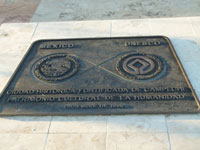 |
 |
 |
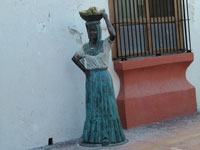 |
 |
 |
 |
 |
 |
 |
 |
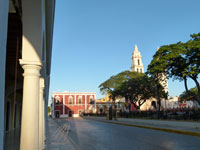 |
 |
 |
 |
 |
 |
 |
Casa Don Gustavo Boutique Hotel
9.3 on Booking.com and on TripAdvisor 10 rooms. Is a restored 18th-century mansion featuring original artwork and furniture combined with amenities like an outdoor pool and whirlpool. There is free Wi-Fi and free parking (all be it that they park your car in a public car park). Rustic, air-conditioned suites feature an iPod docking station and flat-screen satellite TV. Each includes a private bathroom with a bathrobe, hairdryer and amenities. All have a seating area, fan and safe. A private balcony. Breakfast is available in the Casa Don Gustavo’s à la carte restaurant. Located in central Campeche, the hotel is 350 m from the sea.

A "traditional Hotel" set out round two courtyards. It is in the old town part of Campeche, and is a bit difficult to get to, as the street that the hotel is in has been pedestrianised. So you hover nearby and the passenger gets out , goes to the hotel, and comes back with a porter who will then park the car for you, and get it back when you leave.
The reception staff were charming, but there did not actually seem to be anyone in charge.
The mniscule swimming pool is very pleasant.
Our bedroom was large, very Spanish colonial (hence a bit dark) and overlooked the street below, which we could view from our very small balcony.
We were going to eat in the hotel restaurant, but I was spooked by the waiter there who was a bit odd. So we ate at a very popular local restaurant bang opposite. Campeche in fact has has a number of nice restaurants within a few hundred meters
We stayed just one night and were glad to have visited the town. But that was probably enough time to "do Campeche"
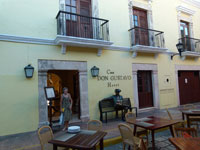 |
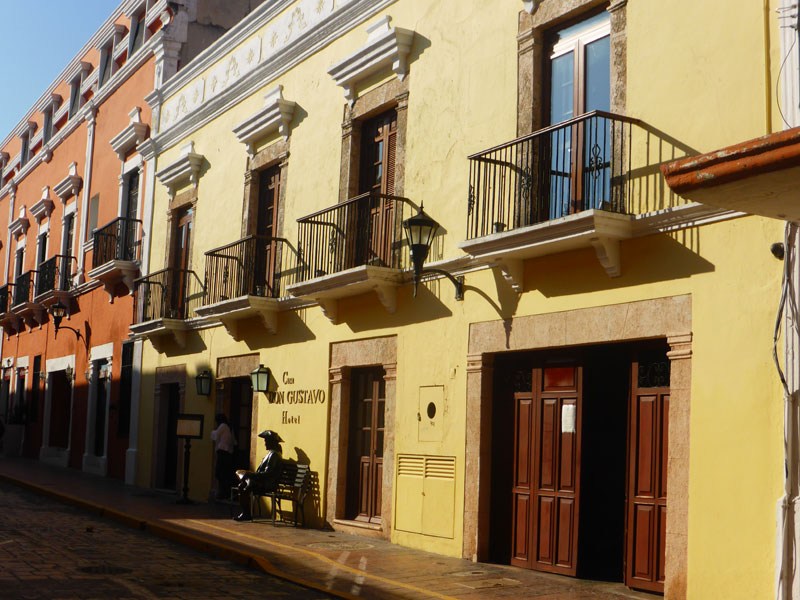 |
 |
 |
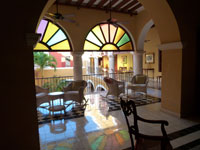 |
 |
 |
 |
 |
 |
 |
 |
La Parrilla Colonial

This a a large restaurant with enough nooks and crannies to give you a feeling of a little privacy. You do need to be on the look out for the table options, and remember you do not have to accept what the greeter tries to thrust on you
They have a spectacular way of flaming some of the main courses, heating two jugs with liquor, lighting the liquor, then pouring from one to the other with flames before eventually pouring over the main course itself
It is a tourist restaurant, but a very happy one!
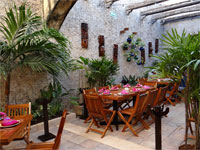 |
 |
 |
And from Campeche, back north to Uxmal and Merida